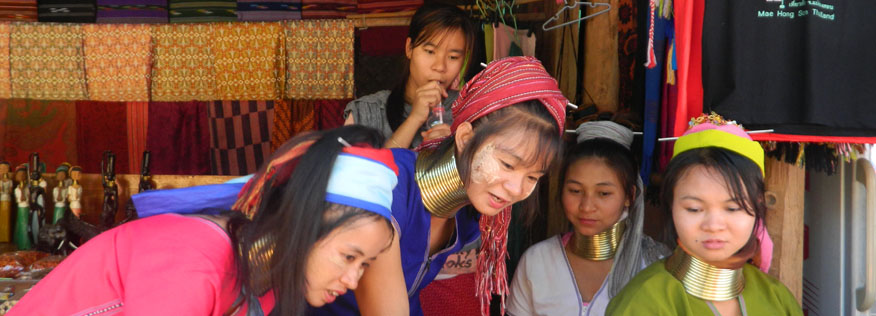
- HOME PAGE
- TOURS LIST
- SITE INDEX
- TOUR SUMMARY
-
TOUR BLOG
DAY 1 - BANGKOK/NAKHON LAMPANG, 31 JANUARY 2013 DAY 2 - NAKHON LAMPANG, 01 February 2013 DAY 3 - NAKHON LAMPANG/PAI, 02 February 2013 DAY 4 - PAI, 03 February 2013 DAY 5 - PAI/MAE HONG SON, 04 February 2013 DAY 6 - MAE HONG SON, 05 February 2013 DAY 7 - MAE HONG SON, 06 February 2013 DAY 8 - MAE HONG SON/MAE SARIANG, 07 February 2013 DAY 9 - MAE SARIANG/MAE SOT, 08 February 2013 DAY 10 - MAE SOT/KAMPHAENG PHET, 09 February 2013 DAY 11 - KAMPHAENG PHET, 10 February 2013 DAY 12 - KAMPHAENG PHET/BANGKOK, 11 February 2013Day 7, Wednesday 6th February - Mae Hong Son
In search of long necks..... Today starts with a visit to the minimart then back for coffee and to update my travel blog. It's nearer to 11 am before I get going, but today I shall start easy with a visit to Wat Chong Kham and Wat Chong Klang beside the lake in Mae Hong Son, the motorbike not really necessary. Then after lunch on the main road, it's up to Wat Phrathat Doi Kong Mu and Wat Phra Nan each of these temples of religious and historical importance, the former offering excellent views across the city and airport. From here it's a short way to the Phaya Singhanatracha Memorial, but it's rather hot again so time for a drink as I head out of the city in search of long-necks. These are Karen hill-tribe people located at Ban Huai Shuathao. From here I cut back and link with the main route 108 south of Mae Hong Son. Further along this road is Ban Pa Bong and yet another hot spring. Finally, I end the day's travel at the viewpoint further up the valley and stop for a coffee but its late afternoon and I prefer to be off the mountain roads before dark. I make my way back to Mae Hong Son 17 kilometres away. On the way back, near where I stopped for a drink earlier I stop for dinner known as 'moo yang gowlee', really a Korean style BBQ which is offered in buffet style. I must get back to Jongkham Place to make further plans as regrettably this is my last full day in Mae Hong Son but not in Mae Hong Son province. Meanwhile, the day's excursions follow in more detail.
Wat Chong Kham..... Wat Chong Kham is an old temple on the bank of the swamp Nong Chong Kham. It was built in 1927 by Thai Yai artisans. The pillars are gilded in golden flakes. The temple houses a large Buddha statue with a lap width of 4.85 metres cast by Burmese craftsmen. Another statue is a replica of the Buddha image in Wat Suthat in Bangkok.
Wat Chong Klang..... Wat Chong Klang, next to Wat Chong Kham, is a temple where a replica of the Phra Phutta Sihing is installed on an altar. There are several interesting items here such as wooden figurines of humans and animals depicted in the Phra Vejsandon Jakata (pronounced Chadok, which means one of odd stories of former incarnations of the Buddha) created by Burmese craftsmen and brought over in 1857. It is painted on glass and about the Jakata and of Prince Siddhartha, as well as the ways of life of the time. The captions are in Burmese. There are also notations that the paintings were by Thai Yai artisans from Mandalay.
Wat Phrathat Doi Kong Mu..... Wat Phrathat Doi Kong Mu, erected by the first governor of Mae Hong Son, is a temple reflecting strong Burmese influence. The main features of this temple are the two lavishly decorated pagodas known to contain relics. Visitors to this temple enjoy magnificent views of the city, mountains and valleys.
Wat Phra Non..... Wat Phra Non, at the foot of Doi Kong Mu houses a 12-metre long reclining Buddha image in Thai Yai style. The image was cast in 1875 by Phranang Miah, the wife of Phaya Singhanatracha, the first governor of Mae Hong Son province. Another main feature of the temple is the two large sculptured lions lying side by side at the foot of a long stairway presumably providing passage to those ascending to pay homage to the Holy Relic on the hill at a time, I guess, before the roadway was built. This temple also has a small museum. While most of the objects are religious, the monarchy is well represented. Curiously there is a small section of international objects which seem out of place. There are a couple of antique clocks from Europe and even a bed warmer marked 'Old Fulham Pottery'. A few objects from the Japanese occupation also are displayed including a helmet and tunic. Interesting!
Phaya Singhanatracha Memorial..... The Phaya Singhanatracha Memorial is situated at the foot of Doi Kong Mu and commemorates the first governor of Mae Hong Son. Phaya Singhanatracha was a Thai Yai native from Burma (Myanmar). He was originally the governor of Khun Yuam Town south of Mae Hong Son but later was officially installed as the governor of Mae Hong Son by the then King of Lanna in 1874.
Ban Huai Shuathao (Karen) Kaw Yao (long-neck village)..... This village is at the head of a valley serviced by a road leading off the highway 108 south of Mae Hong Son some 30 minutes away. The road crosses a number of water courses only by fords. Although easily crossed, care should be taken at these fords due to the slippery surface. The road leads to just one of the Long-Nek villages and for each there is a tax for foreign visitors of 250 baht. On arrival foreigners are handed a fact sheet which explains the reason for the tax. It reads:-
The Paduang (Kayan/Karenni long-necked tribe) are refugees who have been setting (have settled) in Thailand for over 20 years due to political situations in their country, Burma. Since they are refugees they can't work legally in this country.
If you are interested in seeing them, please give entrance fee of 250 baht per person at the Tourist Service Center. This fee supports their daily needs such as food (rice and curry), medical treatment, children's education, development of their village, and other extra needs.
Originally they were farmers in Burma. They had their own houses, villages and farms and stayed this way peacefully. However, due to the military government power in this (the) year 1988 to this day, people in the ethnic areas were tortured, suffered from violations of human rights, forced labor, forced relocations; porters to carry the troops' loads when they fought against the ethnic guerillas. In 1948 Burma gained its independence from England (but) the civil war still exists.
If you suspect to give or support with the entrance fee to them, you can ask anywhere to the tourist services.
Thanks a lot for your kind payment...MAY YOU HAVE A GOOD TRIP...In-charge Huay Seau Thao.
Editor's note: This is an emotive appeal to foreign tourists who are asked to burden the responsibility for these people not forgetting that their own governments are already supporting refugees from many nations. There is evidence that the Thai Royal House is supportive of initiatives such as irrigation but little is forthcoming directly from the Thai government. In fact Thai people can freely enter these villages: After all it is Thai land. I added this comment meant to be thought-provoking rather than in judgment but thankfully when I visited, village children were returning from school and I was told there were medical facilities in the village. The Long-Neks busied themselves in producing goods for sale to tourists and I saw no evidence of real poverty. I should leave it at that.
Ban Pa Bong Hot Spring..... Returning down the valley I cross the Pai river which houses a boat landing. Boats can be hired for a slow but scenic transit to the villages, but I'm off in the direction of Ban Pa Bong. This village houses a hot spring. Here various options for massage and bathing in the Spa water exist. The hot spring is situated at the centre of the complex. You can sample the effect of hot spring water simply by immersing your feet in an overflow channel. The water is so hot it would be fatal if you fell in the spring itself. Well worth a foot bath though if you can bare it.
Ban Pa Bong Viewpoint..... From the village the road winds up a mountain pass, an interesting pull for any vehicle. Near the summit is a rest stop with toilets and a coffee shop. The views up to a small valley opposite and the small dam in the river below makes a break here most worthwhile.
Next Page.
Mae Hong Son Province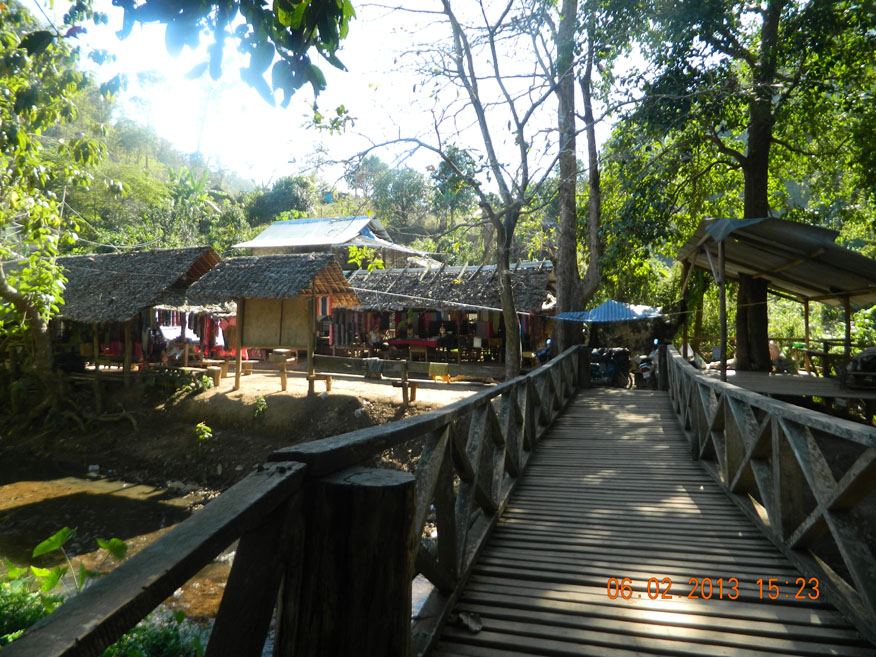
Ban Huai Shuathao, a Karen Long-neck Village
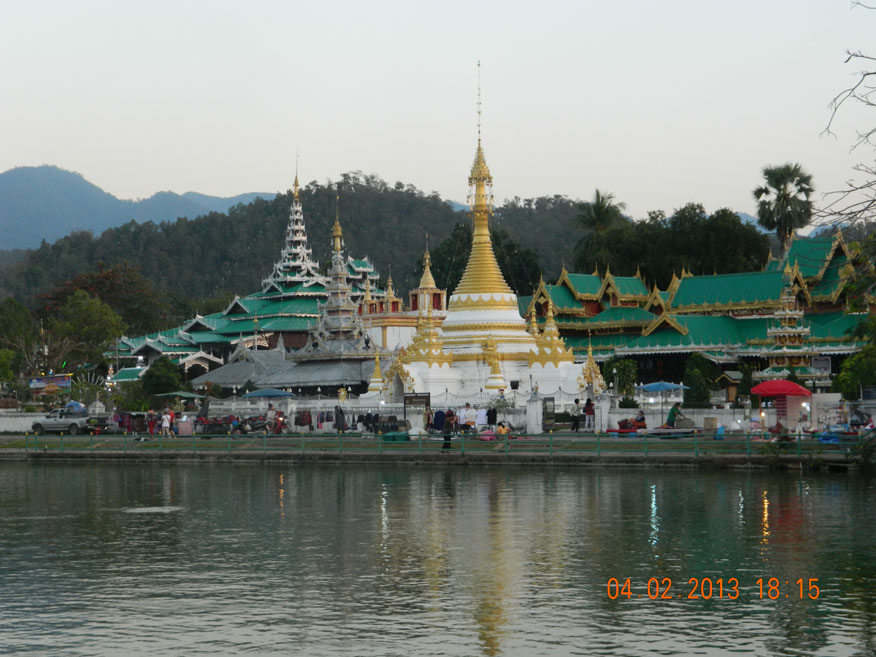
Wat Chong Kham and Wat Chong Klang
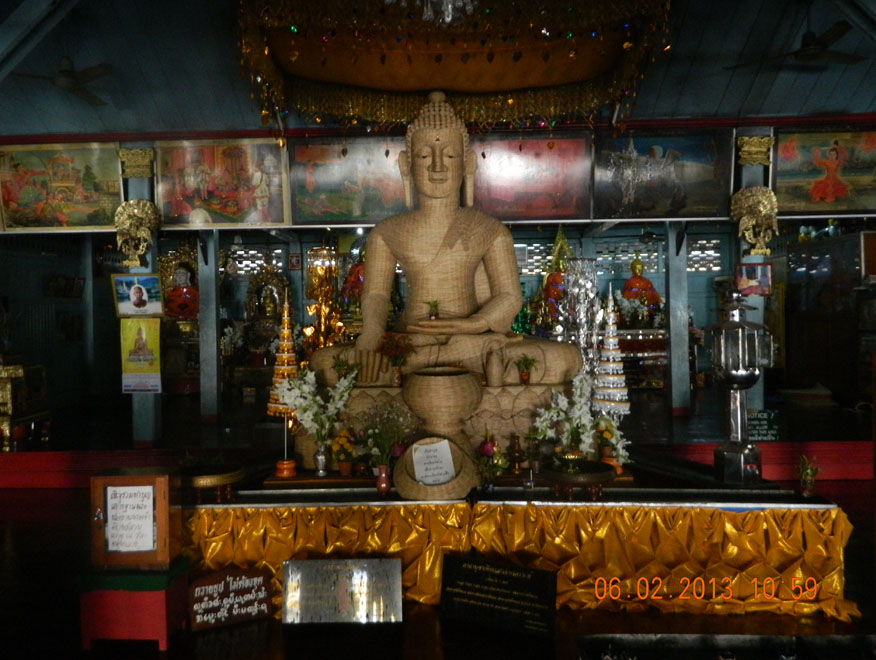
Buddha Image at Wat Chong Klang

The Reclining Buddha at Wat Phra Non
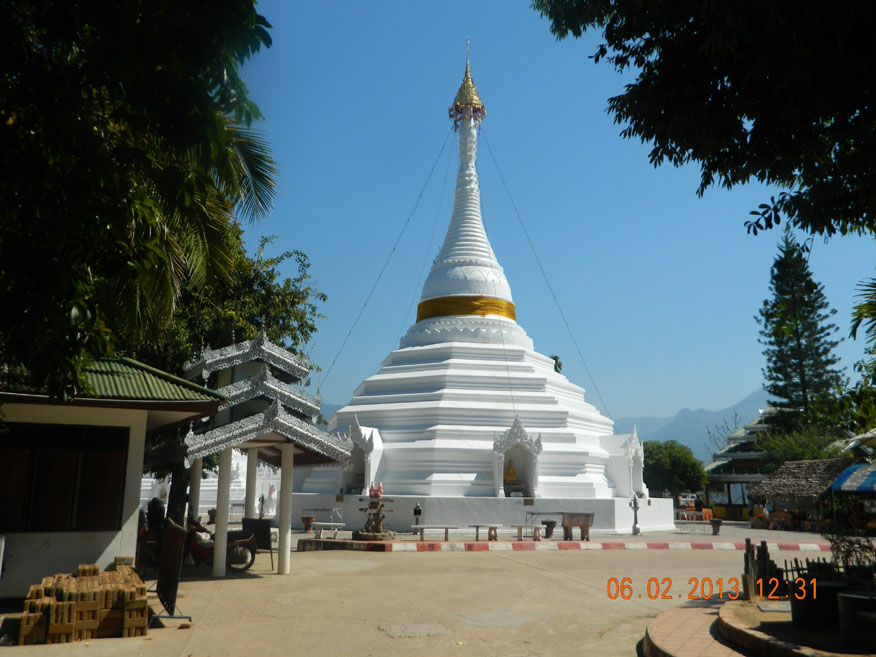
One of the Chedis at the Hill Temple,
Wat Phrathat Doi Kong Mu

The Phaya Singhanatracha Memorial
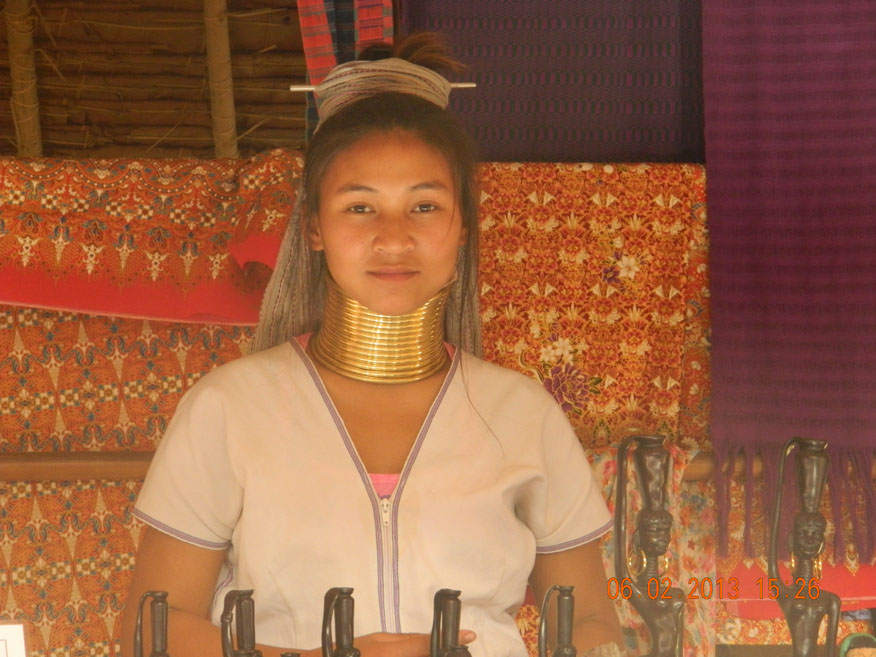
A Resident of Ban Huai Shuathao,
a Karen Long-neck Village
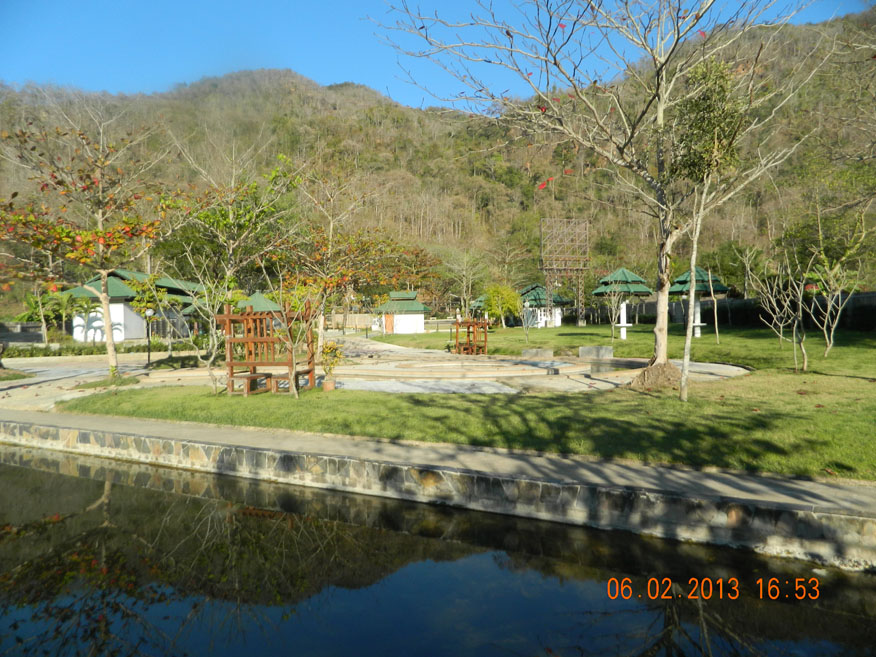
Pa Bong Hot Spring
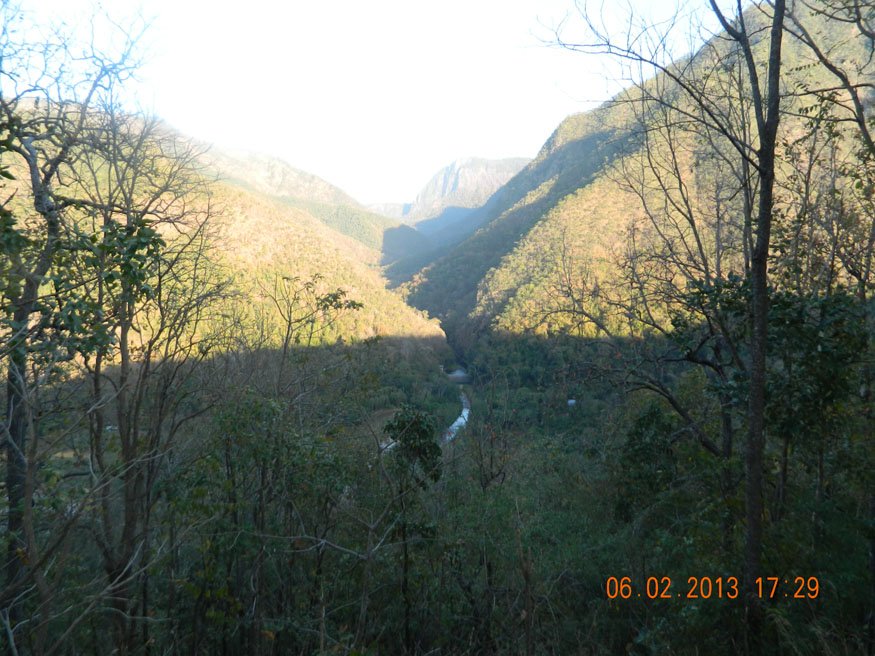
Pa Bong viewpoint